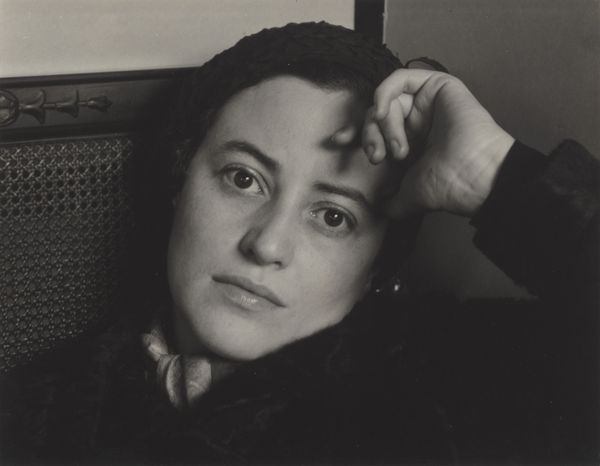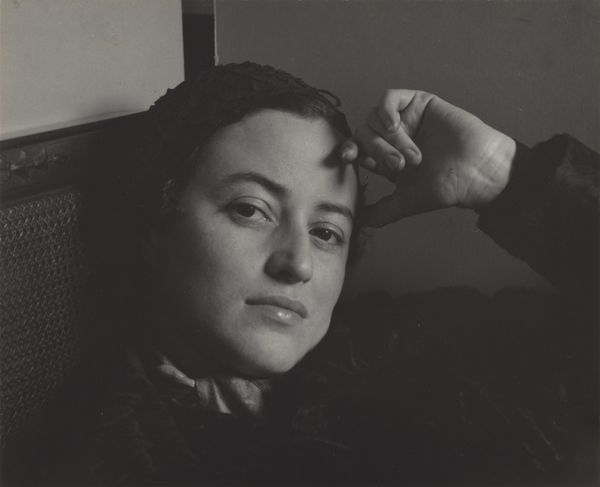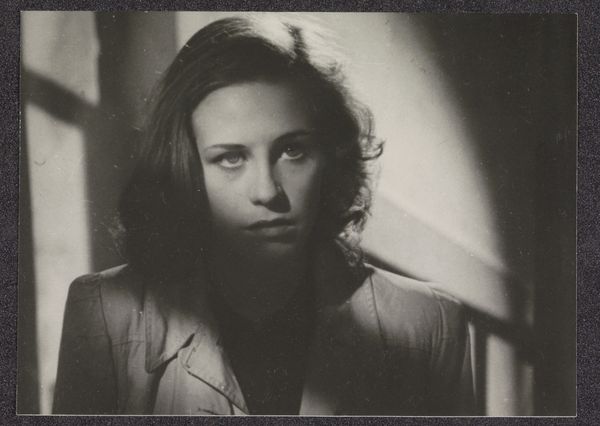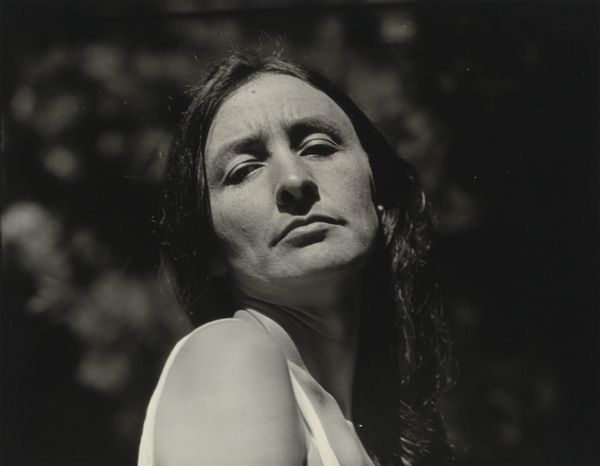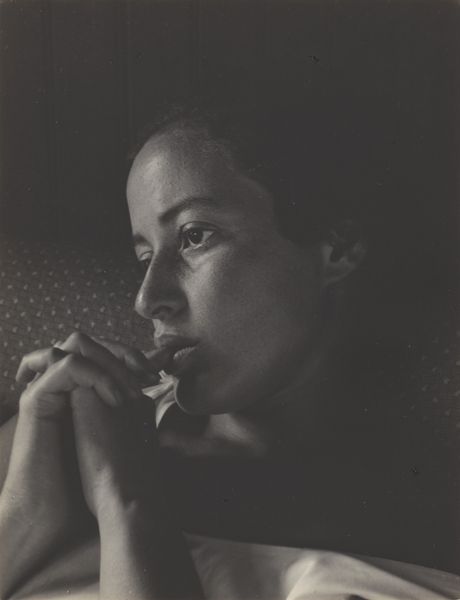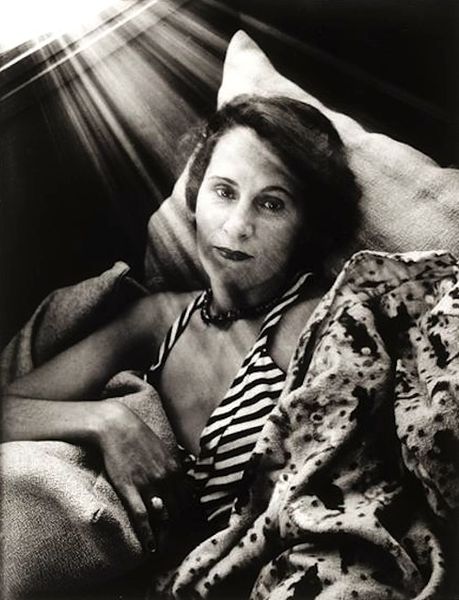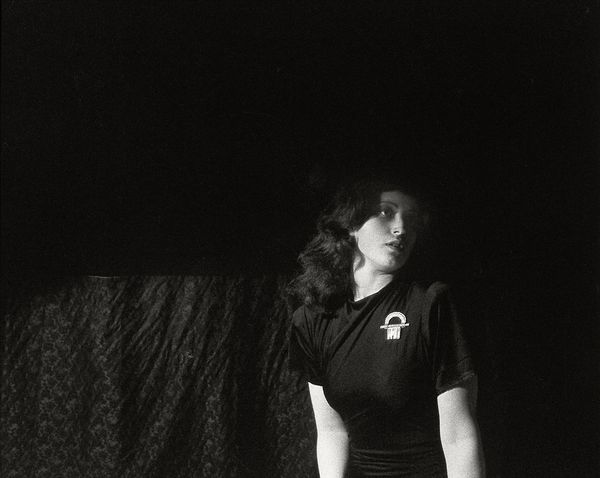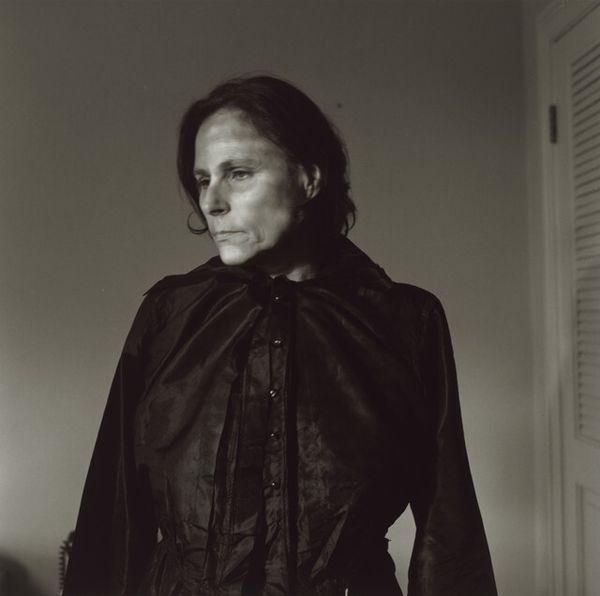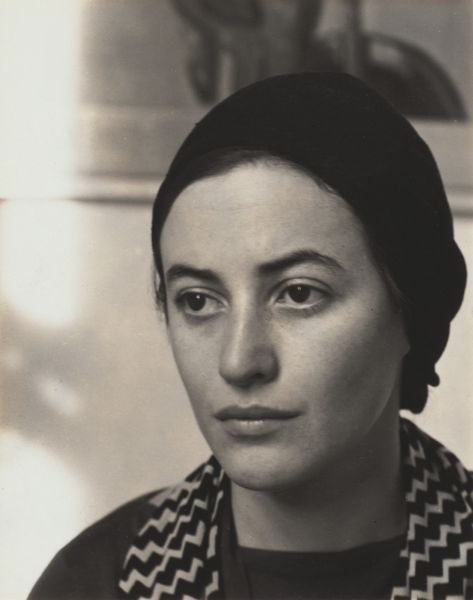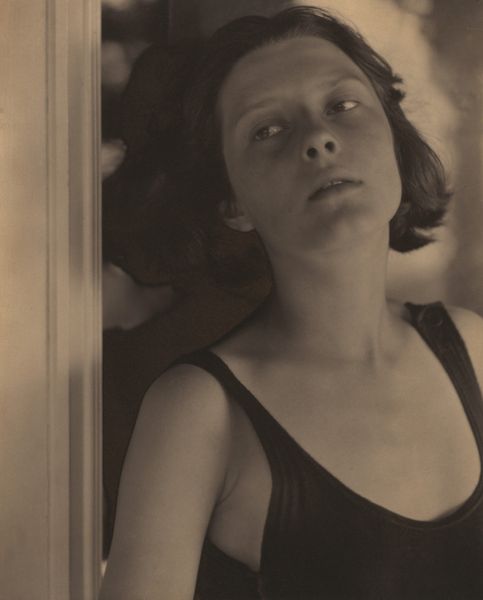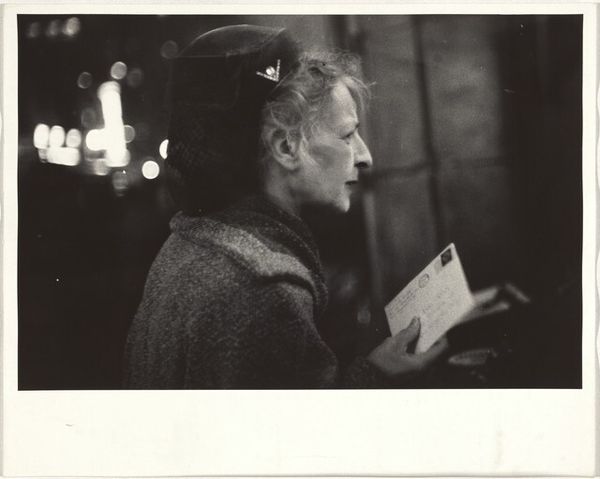
#
wedding photograph
#
black and white photography
#
cool tone monochrome
#
black and white format
#
historical photography
#
black and white theme
#
black and white
#
monochrome photography
#
wedding dress
#
monochrome
Dimensions: image: 40.64 × 49.53 cm (16 × 19 1/2 in.) sheet: 58.42 × 67.31 cm (23 × 26 1/2 in.)
Copyright: National Gallery of Art: CC0 1.0
Editor: We’re looking at “Istanbul, 2004, in Istiklal Caddesi” by Leo Rubinfien, a monochrome photograph taken sometime between 2004 and 2014. The woman's closed off posture is striking to me; what elements jump out at you? Curator: Well, let's consider the materiality of this photograph. It's a black and white print – likely silver gelatin – which speaks volumes. Think about the process involved: the photographer's choice of film, the darkroom techniques. It’s not just capturing an image; it's crafting an object. Editor: That’s a great point. How does that crafting, or that specific materiality, inform our understanding of the image? Curator: The monochrome aesthetic abstracts the scene, stripping away the immediate sensory data of color. What remains is form, texture, and the subtle play of light and shadow. Consider, too, what "Istiklal Caddesi" represents: a major public artery of Istanbul, a site of constant negotiation between tradition and modernity, commerce and culture. Rubinfien, by rendering this street scene in black and white, invites us to look deeper, beyond the superficial bustle. What social narratives might be unfolding? Editor: So you see the materiality not just as aesthetic, but as a way to access social and even economic information? Curator: Absolutely. Photography as a medium is inherently tied to labor – the photographer's, of course, but also the labor involved in producing the materials themselves, the chemicals, the paper, the camera. Who made them? Where? Under what conditions? And who is this woman and what labor does she undertake? These questions aren't immediately visible in the image, but the photograph’s very existence as a material object demands we consider them. It’s a physical reminder of unseen processes. Editor: This reframing, from aesthetic image to crafted object steeped in social context, has definitely shifted my perception. It gives it an entire added depth! Curator: Exactly. Thinking about the processes that result in a final form invites more thoughtful observations.
Comments
No comments
Be the first to comment and join the conversation on the ultimate creative platform.
